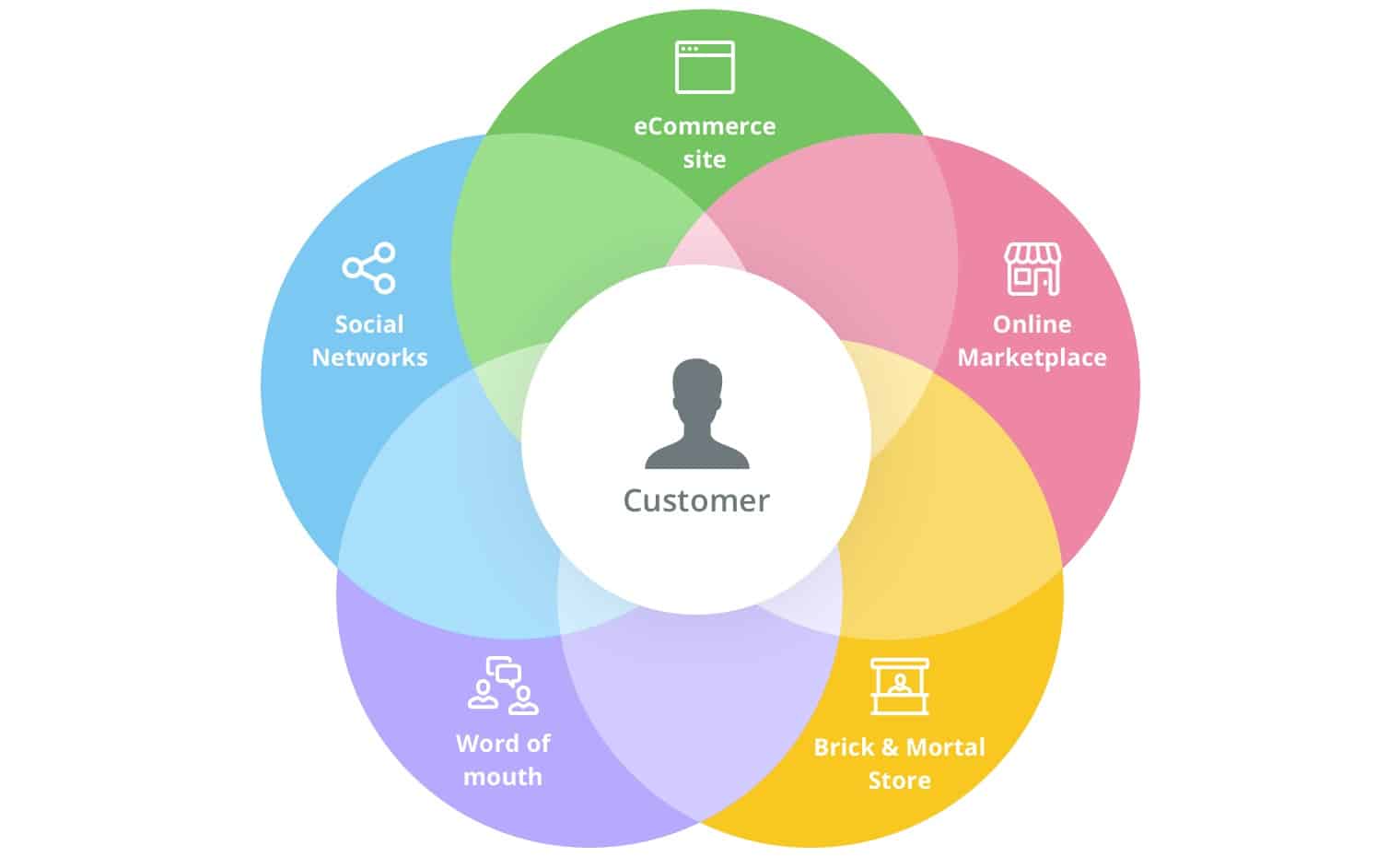What is Omni-Channel Marketing?
Organizations today are undergoing a digital transformation, abandoning legacy analog technologies in favor of digital innovations that change the way they deliver value to customers. From a marketing standpoint, businesses are using technology to steer away from the traditional marketing channels (print media, television and radio advertisement, billboards, etc.) and towards personalized, one-to-one marketing interactions with customers and prospects through digital channels.
Digital technology is also having a strong effect on consumer behavior and the ways that consumers interact with brands. In 2019, there are 5.1 billion individual mobile subscribers in the world, but over 9 billion active connected mobile devices. Consumers are increasingly interacting with their brands through multiple channels (website, social media platforms, in-store) and multiple devices (laptop, smartphone, tablet) as part of the purchasing process.
Omni-channel marketing is an innovative approach to marketing in an era of consumers that use multiple devices to interact across multiple channels. The goal of an omnichannel marketing strategy is to seamlessly integrate the customer experience across marketing touchpoints, providing messaging that is consistent with each prospect’s movement through the marketing funnel.
Omni-channel marketing experts anticipate that customers will move between devices and touchpoints as they complete a transaction, so they implement technological tools and processes to make that process as seamless and integrated as possible from the customer’s point of view. This helps to reduce the effort associated with the purchase, increase operational efficiency, and drive sales while increasing customer satisfaction.

Omni-Channel vs Multi-channel Marketing - What's the Difference?
Multi-channel and omnichannel marketing is generally quite similar concepts, and on the surface, they seem to imply the same thing: marketing to consumers through a variety of channels. In fact, multi-channel and omnichannel marketing is quite different in terms of their overall focus and how they address business problems.
Multi-channel marketing can be described as the implementation of a variety of marketing channels for marketing a single product. While a single-channel strategy might focus only on retail stores, or only on social media advertisement, a multi-channel strategy blends a variety of distribution and promotional channels into the overall marketing plan.
The goal of multi-channel marketing is to facilitate consumer choice. Marketing to consumers through multiple channels aims to facilitate transactions wherever it is most convenient for the customer, be it in a retail store, by ordering a product online, or through a mail-order catalog. On the promotional side, a multi-channel marketing strategy could include social media, pay-per-click advertising, and SEO as channels for marketing to prospects.
Omni-channel marketing takes the multi-channel marketing approach a step further. Omni-channel represents an effort to provide a seamless and integrated customer experience across channels. Omni-channel marketers leverage user behavior tracking to monitor customer interactions with each marketing touchpoint and provide content and resources that move the prospect towards completing a transaction.
The goal here is not to allow customers a choice between channels, but to provide a seamless experience as the customer moves between channels.
In a sense, omnichannel marketing is a modernized approach to multi-channel marketing that is optimized for the behavior of today’s consumers.

How Does Omni-Channel Marketing Work?
Omni-channel is all about getting your marketing channels working together to encourage a transaction on your platform. The key to a successful omnichannel marketing strategy is understanding how to effectively leverage each marketing channel you have available to influence consumer behavior with the right messaging at the right time.
The foundation for a successful omnichannel marketing strategy is the ability to measure user behavior across marketing touchpoints:
- Your company website can be configured with cookies that track user behavior and interactions on your website. You can also have customers set up an account before shopping on your website. This will allow shoppers to log in to their account on multiple devices. You can use accounts to track user behavior, save preferences and keep shopping carts loaded with their product selections between browsing sessions.
- Marketing analytics software tools can be used to monitor customer interactions with digital marketing touchpoints, including social media, advertisements, e-mail click-through traffic and more.
With the appropriate data management systems in place, your organization can design an omnichannel experience based on its most profitable channels. Here’s how you might design that experience:
- Social Media Advertising – You advertise to prospective customers through social media advertising platforms like Instagram and Facebook. When a prospect visits your web page, you can start using cookies to track their behaviors on your website. Marketing analytics tools will reveal which social media campaigns are driving the most traffic to your website.
- Website – Your website acts as a crucial marketing channel and the main distribution point for your products and services. Visitors to your website may be asked to create an account to access gated features or to submit their contact information to access gated content. Capturing e-mail addresses through your website opens up an additional marketing channel where you can reach your shoppers with personalized messages. Account creation helps you provide a stable experience for users who switch devices during a transaction.
- Email Marketing – If a consumer leaves the website without making a purchase, you may have captured an email address that can be used to stay in communication with them. If they abandoned a cart, you may be able to remind them about the transaction or offer discounted shipping or another perk to motivate a purchase.
- Ad Re-targeting – Ad re-targeting is a type of PPC advertising that shows targeted audience to shoppers that have already visited your store. With re-targeting, a consumer who places Item Z into their shopping cart on your website, but then abandons their cart, might have the same item presented to them as part of an advertisement on an unrelated Google search ten days later. Ad re-targeting reminds shoppers of what they were about to purchase and may motivate them to return to their shopping cart and complete the order.
As you can see, an omnichannel strategy depends on getting multiple channels working together to facilitate the transaction. You also need to monitor consumer behavior, so you can tell where the customer is in their customer journey and target them with the right messaging in the right place at the right time.
Data analytics and cookie tracking play an important role in delivering an omnichannel experience, but you’ll also need a robust CRM, customized content for each buying persona and marketing scenario, well-developed marketing automation capabilities and a responsive website design that functions well on all types of viewing devices.

Boost Your Omni-Channel Marketing Strategy with Directive Consulting
At Directive Consulting, we build omnichannel marketing strategies that help our partners provide a seamless experience for their customers through the customer journey. We leverage our knowledge, expertise, and capabilities in marketing automation, customized content creation, and digital analytics to drive results, including increased marketing ROI and enhanced lead and opportunity generation.
Ready to learn more? Contact us for a custom proposal.